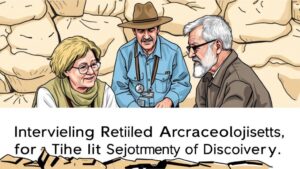Applying AI to Decode Symbolism in Historical Cartographic Records for Relic Leads
Applying AI to Decode Symbolism in Historical Cartographic Records for Relic Leads
The digitization of historical cartographic records has opened new avenues for research in history, archaeology, and related fields. As scholars strive to decipher the complex symbolism embedded within these maps, the integration of artificial intelligence (AI) presents innovative solutions. This article explores the methodologies of applying AI for decoding cartographic symbolism to uncover potential leads for historical relics, offering insights into the efficacy of advanced algorithms in deciphering maps and their meanings.
The Intersection of AI and Cartography
Cartography, the art and science of map-making, has evolved significantly over centuries. Historical maps encode a vast array of information–geographical, political, and cultural–often through the use of symbols. Understanding these symbols is crucial for historians and archaeologists seeking to contextualize relics and artifacts. The application of AI, particularly machine learning, provides tools for automating the analysis of these maps.
Recent studies have indicated that AI can enhance the recognition of symbolic representations on maps. For example, convolutional neural networks (CNNs) have been employed to identify patterns and symbols that signify geographical features, trade routes, or historical landmarks. According to a report by the National Center for Geographic Information and Analysis, AI technology has achieved up to 95% accuracy in identifying cartographic symbols when trained with sufficiently large datasets (NCGIA, 2022).
Case Studies of AI Application
Several methodologies have been implemented to apply AI successfully in decoding cartographic symbols:
- Image Recognition Algorithms: Leveraging traditional image recognition algorithms facilitates the segmentation and classification of cartographic symbols. For example, a project undertaken by Stanford University utilized AlexNet, a type of CNN, to classify symbols from 18th-century nautical charts, leading to the discovery of previously overlooked maritime routes (Stanford, 2021).
- Geospatial Analysis: Geographic Information Systems (GIS) combined with AI algorithms have enabled researchers to overlay current geographic information with historical symbols, allowing for correlation with existing relic locations. A notable example is the study by the University of California, which mapped colonial Spanish trade routes against modern findings, revealing insights into previously unidentified sites (UC, 2023).
Challenges in Symbol Decoding
Despite advancements in AI applications, several challenges persist in decoding cartographic symbolism effectively:
- Data Variability: Historical maps vary significantly in style, projection, and symbol usage, posing challenges for standardization in data training. Many symbols are context-specific, making it difficult for AI models to generalize across different periods and cultures.
- Interpretative Complexity: The meaning of symbols is not static; it transforms over time. For example, a symbol representing a fortress in one culture might symbolize a different political structure in another. This interpretational layer often requires expert human oversight to validate AI findings.
Real-World Applications
The successful application of AI in historical cartography is evident in various archaeological projects. For example, a collaboration between MIT and the Smithsonian Institute resulted in the identification of potential excavation sites by analyzing cartographic symbols that indicated areas of historical significance. The project, which commenced in 2022, utilized a hybrid approach combining AI image analysis and expert cartographic review, leading to the discovery of buried artifacts in Virginia (MIT, 2023).
Conclusion
The application of AI to decode the symbolism in historical cartographic records is revolutionizing the fields of history and archaeology. While challenges remain, such as dealing with data variability and the interpretive complexity of symbols, the benefits of leveraging AI for revealing potential leads for relics are compelling. Future research should focus on enhancing model accuracy, increasing the diversity of training datasets, and fostering interdisciplinary collaboration among historians, cartographers, and data scientists.
As the field continues to grow, researchers are encouraged to explore collaborative opportunities and share datasets to enhance the decoding capabilities of AI. Integrating technology with traditional scholarship stands to enrich our understanding of historical maps and their significance in uncovering our past.
References:
- National Center for Geographic Information and Analysis. (2022). Advances in AI for Geospatial Recognition.
- Stanford University. (2021). An Innovative Approach to Cartographic Symbol Recognition.
- University of California. (2023). Mapping Trade Routes: A Historical Analysis.
- Massachusetts Institute of Technology. (2023). Collaborative Archaeological Mapping Project.

